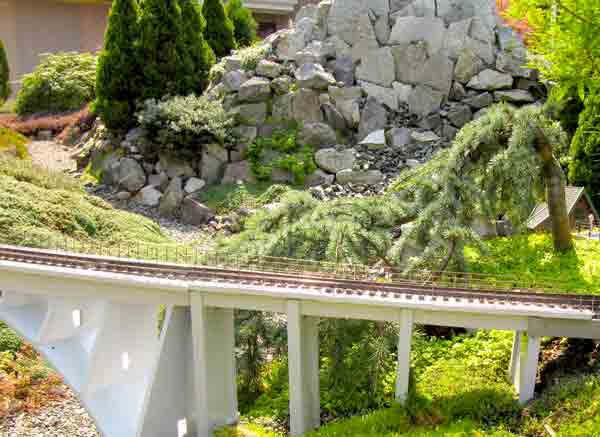
Common name: Weeping Norway spruce
Latin name: Picea abies ‘Pendula’ Plant type: dwarf conifer USDA Hardiness Zones: 2-8 Cultural needs: Moist, well drained, slightly acidic soil; sun to part shade Plant height: 18″ if prostrate; 10-12′ if staked Dark, evergreen needles on drooping soft branches make weeping Norway spruce an attractive specimen tree. Garden railroaders […]
Read More…
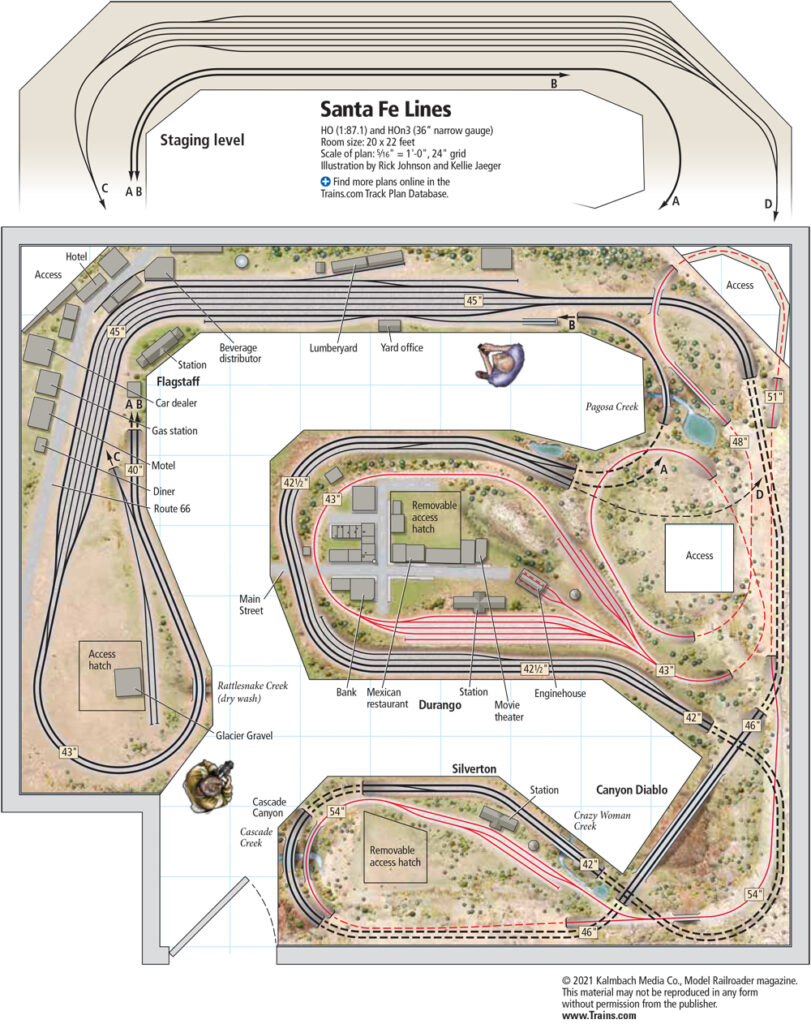
Facts & features Name: Santa Fe Lines Scale: HO (1:87.1) and HOn3 (36″ narrow gauge) Size: 20 x 22 feet Prototype: Atchison, Topeka & Santa Fe and the Durango & Silverton Narrow Gauge Locale: Northern Arizona/Southwestern Colorado Era: 1994 Style: walk-in Mainline run: 150 feet (Santa Fe) plus 110 feet (D&S) Minimum radius: 24″ (ATSF), […]
Read More…
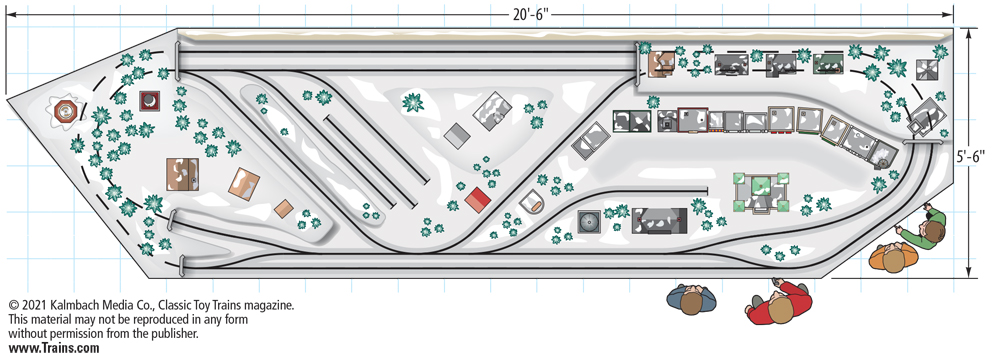
Facts & features Name: Richard and Mary Kay Doolittle’s O gauge layout Dimensions: 51/2 x 201/2 feet Track and switch: Lionel FasTrack (diameters range from 42″ to 54″) Motive power: Lionel (postwar, modern) Rolling stock: Lionel (postwar, modern), MTH Controls: Lionel no. 22983 180- watt PowerHouse power supply with Legacy command control Accessories: Department 56, […]
Read More…
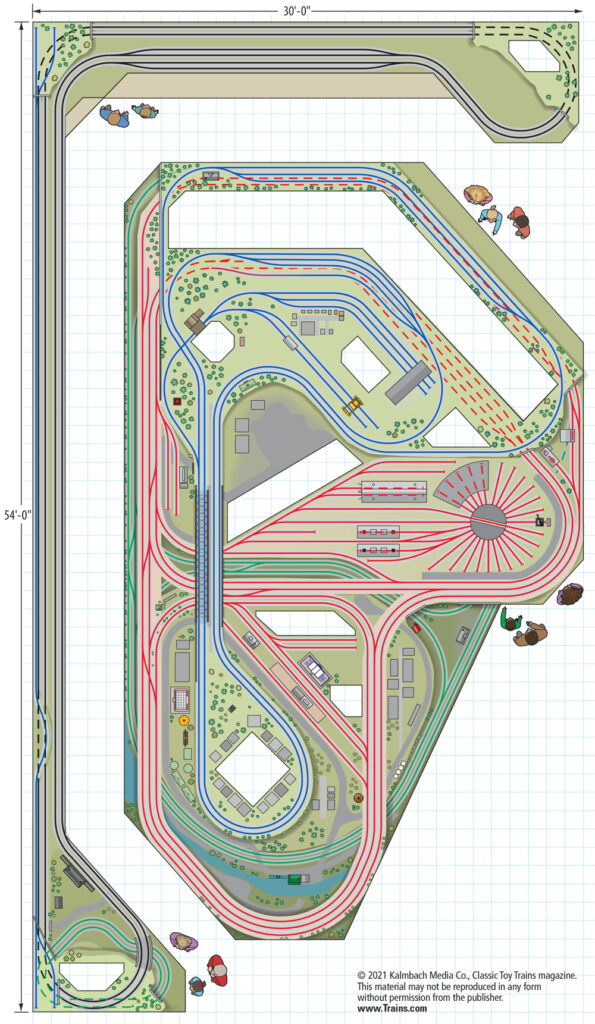
Facts & features Name: Milwaukee Lionel Railroad Club’s O gauge layout Dimensions: 30 x 54 feet Track and switch: GarGraves, Lionel (diameters range from 72 to 120 inches) Motive power: American Flyer, Atlas O, Ives, K-Line, Lionel (all eras), Marx, MTH, Weaver, Williams Rolling stock: Atlas O, Ives, K-Line, Kusan, Lionel (all eras), Marx, MTH, […]
Read More…
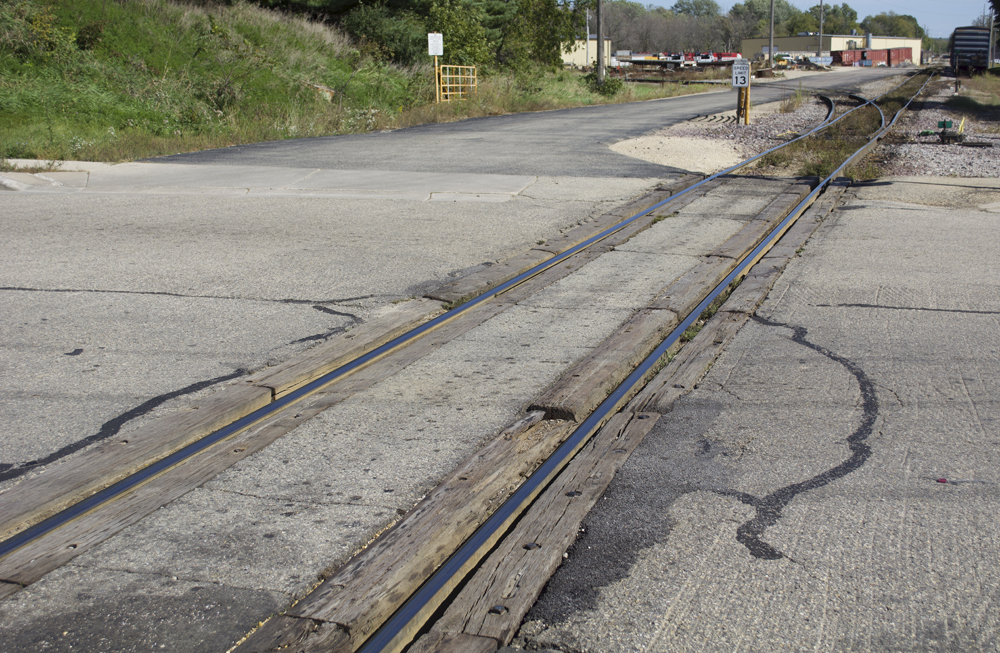
Grade crossings you can model are scene enhancers that you should consider adding to your list of projects. “Why a grade crossing?” you may ask. “I’d rather work on a locomotive, freight car, structure, or [fill in the blank with your favorite aspect of the hobby.]” I get it. Grade crossings you can model introduction […]
Read More…
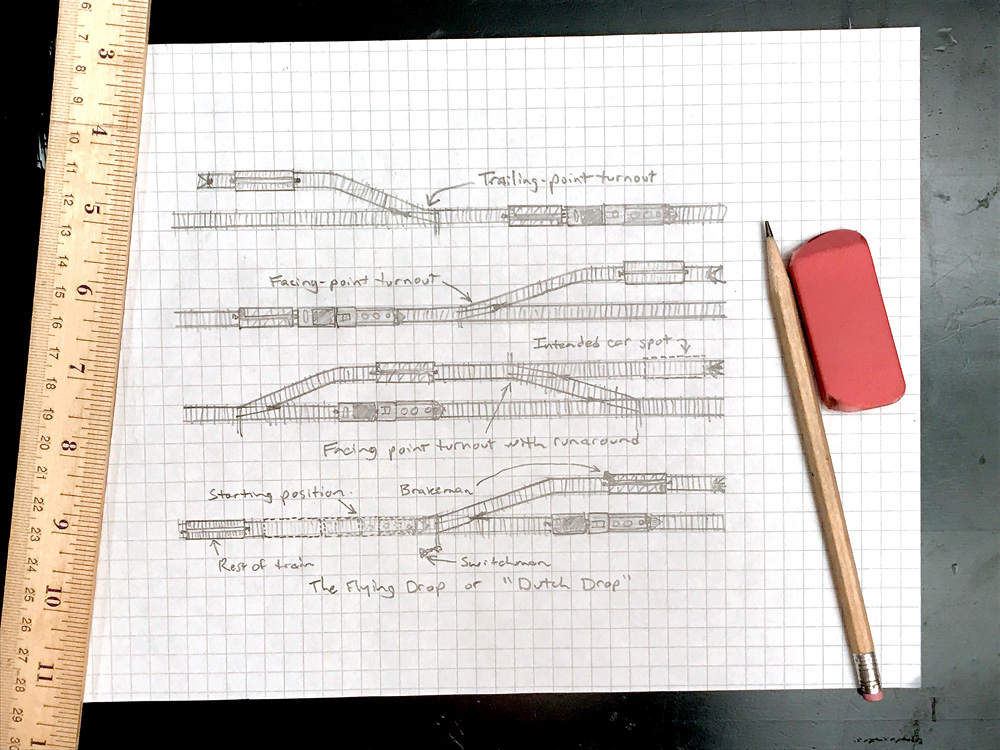
A turnout is where one track becomes two. The single track, where the movable point rails let a train choose between routes, is called the point end of the turnout. The two-track end, where the closure rails cross at the frog, is the frog end. And which end is which can make or break a […]
Read More…
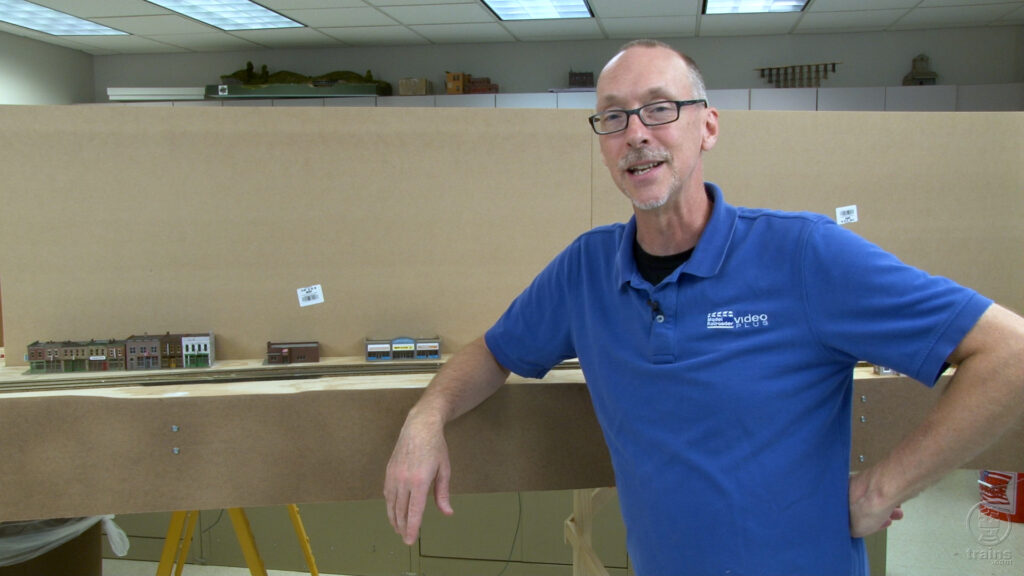
David shows how he attached fascia to the State Line Route N scale layout to give it a more finished appearance. It can be especially tricky when there are no extra hands around to help with the curves, but David has a solution! Plus, Gerry Leone and Seth Puffer have finished building their structures for […]
Read More…
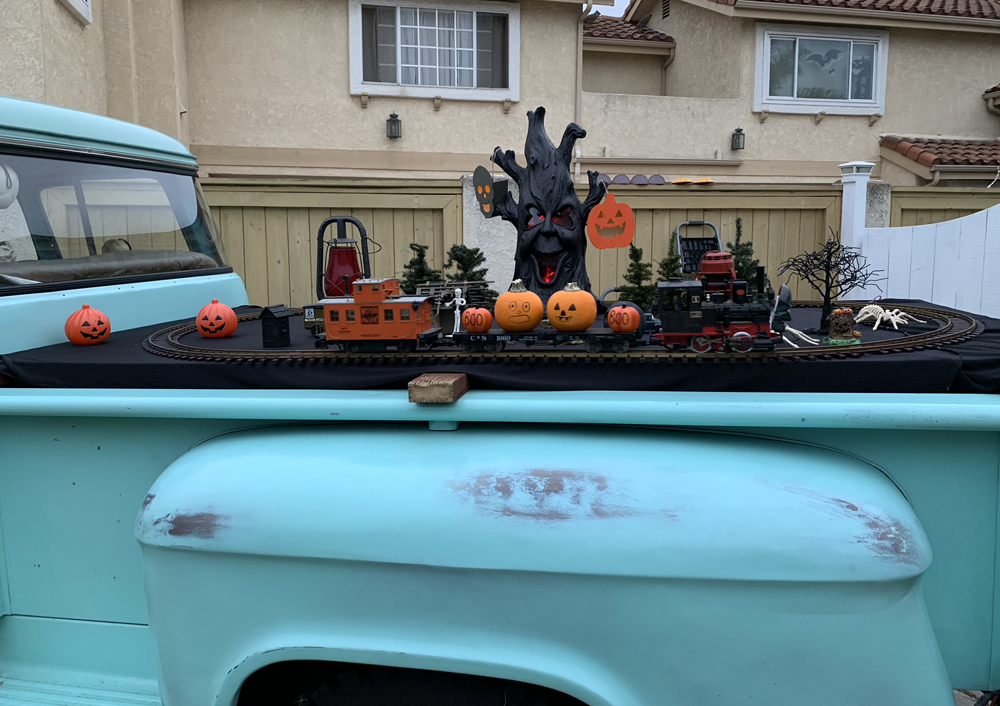
I love collecting and displaying large-scale trains. I also love showing off my 1956 GMC pick up at car shows, or even at the front of my driveway at home. I decided to combine the two and make a mobile display layout! The layout is an easy build. My truck has slots on the truck […]
Read More…
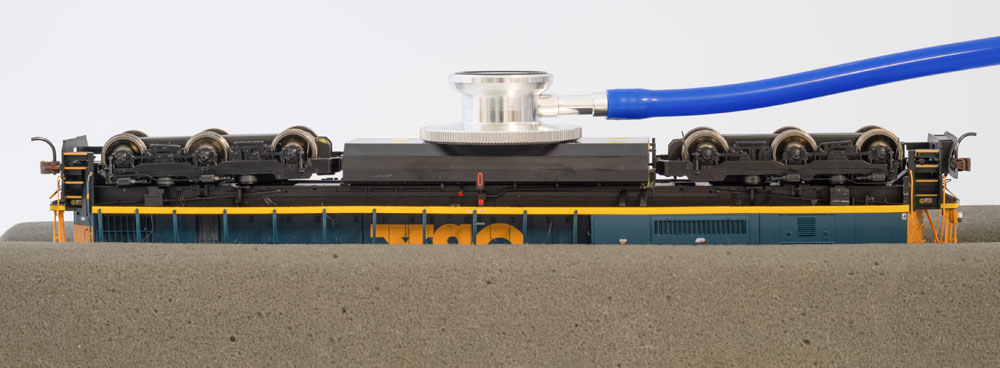
Good news! If your lifeless locomotive has ever run under Digital Command Control (DCC), chances are good that you can get it running again without having to send it off for repair. The solution is easy, too! More good news! If you have a new steam locomotive that doesn’t run or only partially works, maybe […]
Read More…
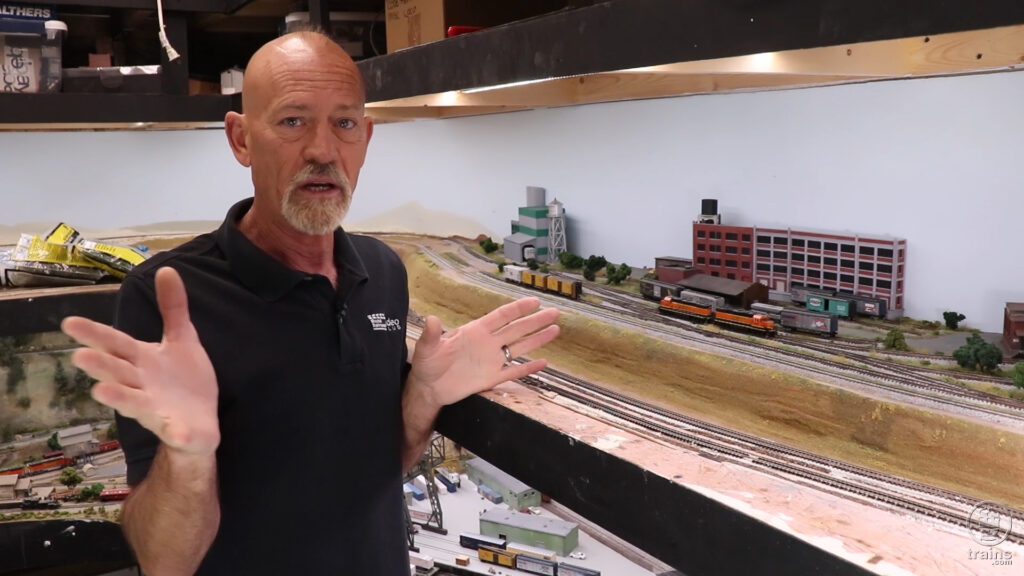
Series host Steve Brown heads for the homestretch, as he works to complete the scenery on his down-sized (N scale) depiction of the Winston-Salem Southbound Railway. Follow the “Regular Guy” routine to learn simple ways for adding both fine and clump ground cover materials to the outlots of this industrial area. […]
Read More…
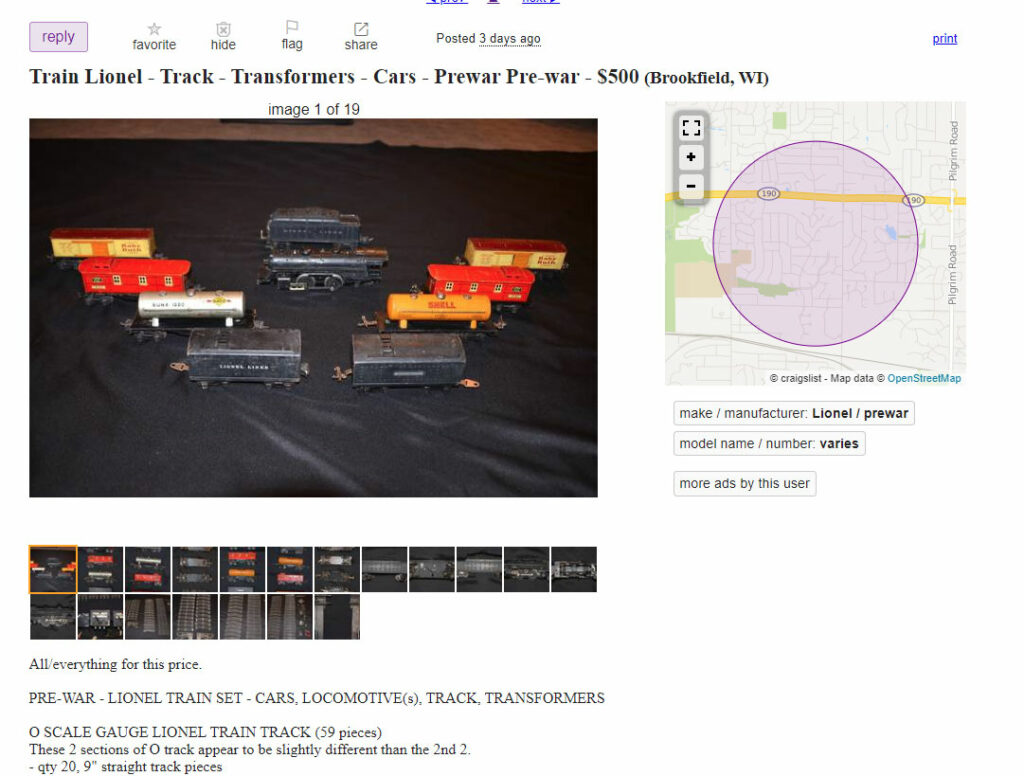
Where can I sell my trains? How to sell toy trains might be one of the most-asked questions we get at Classic Toy Trains. I first refer people who want to know how to sell Lionel, MTH, Marx, and American Flyer trains to the advertisers in Classic Toy Trains and even Model Railroader. There are […]
Read More…

After a quick update with Jenny to see how her Walther’s bungalow kit is coming along, David gets to work on electrical projects. Follow along, and you’ll see how he installed feeder wires and added a power bus line under the State Line Route N scale layout. […]
Read More…












